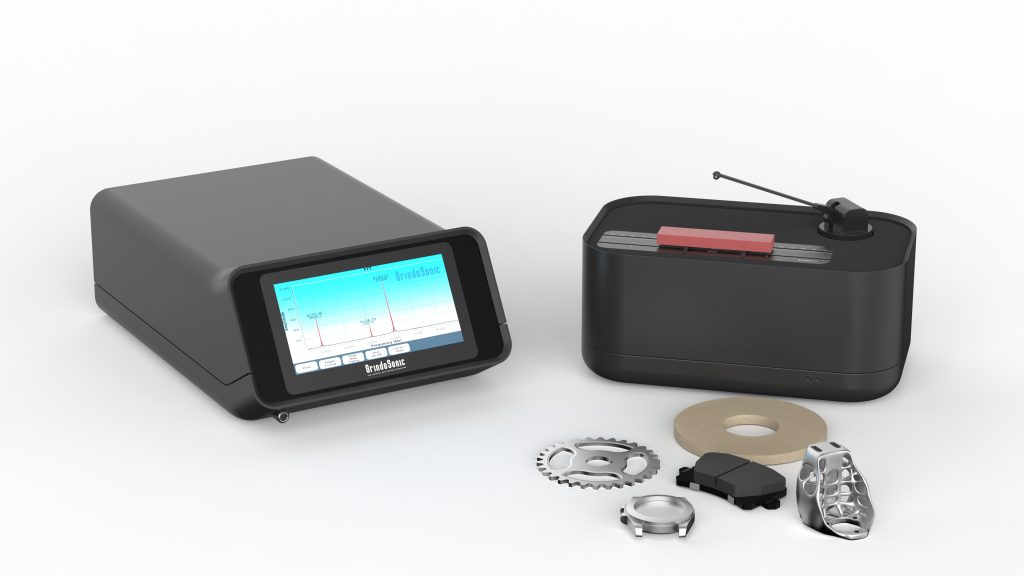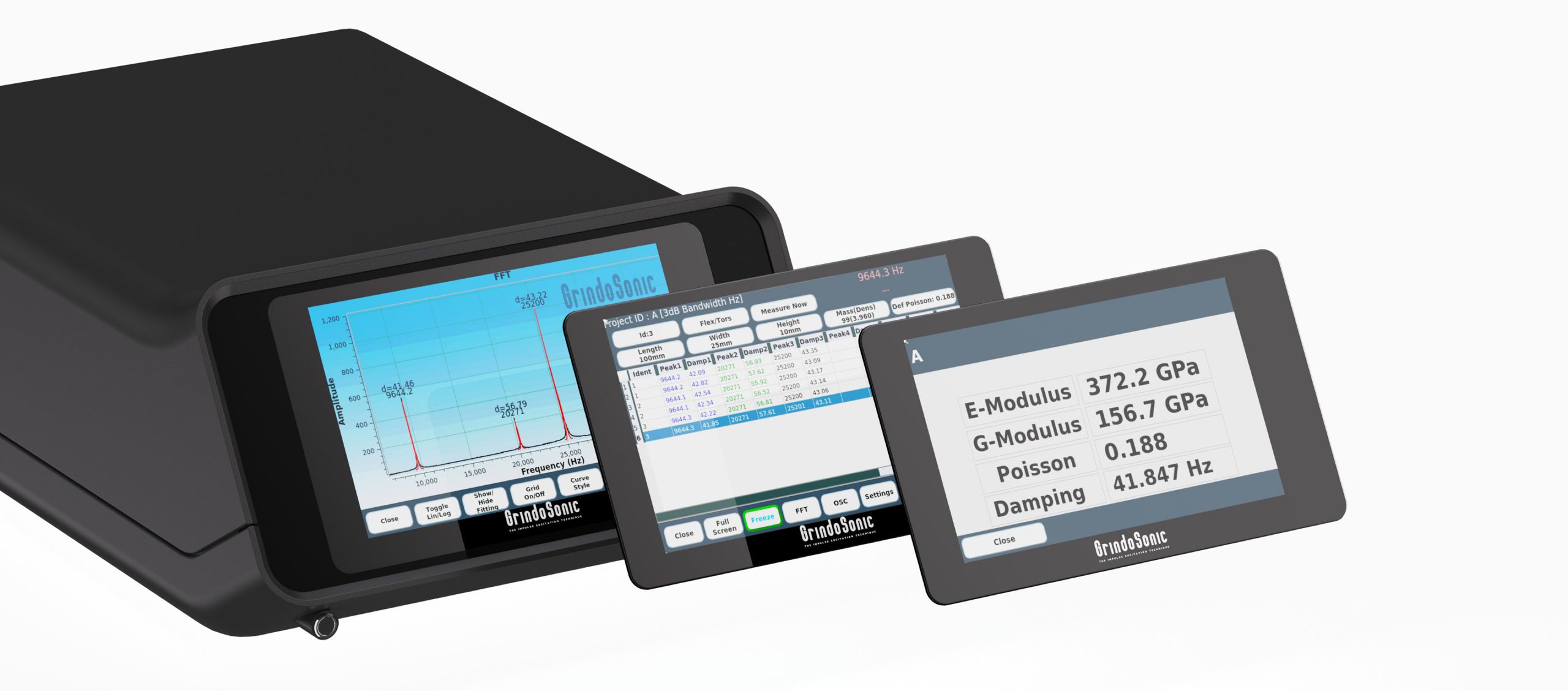See Inside Materials Without Cutting Them Open
Every part tells a story when it vibrates. With a single tap, the Impulse Excitation Technique (IET) reveals a material’s stiffness, bonding quality, and hidden flaws – without damaging it.
Unlike destructive tests, this method works directly on finished parts, delivering real physics-based measurements instead of assumptions.
Why It Matters
Most failures aren’t visible on the surface. Cracks, weak bonds, and voids remain hidden – until it’s too late. Traditional destructive testing is costly, slow, and only valid for the single sample you break.
Impulse Excitation changes the game:
- Non-destructive – The part stays intact and usable.
- Precise – Detects property changes and microcracks early.
- Fast – Results in seconds, ideal for high-throughput QC.
- Scalable – Integrates into production lines and automated workflows.

How It Works
- A gentle tap excites the material.
- Resonance vibrations form inside the part.
- Frequencies and damping are measured and converted into elastic properties such as:
- Young’s modulus
- Shear modulus
- Poisson’s ratio
- Damping capacity
- Porosity indicators
Standards-based and repeatable, IET is described in ASTM E1876, C1259, C215, E3397 and more.
Proven Across Industries
Impulse excitation helps industries ensure quality, consistency, and reliability without slowing production:
- Aerospace – Detect weak bonding in composites, validate stiffness of critical parts.
- Automotive – Confirm consistency in castings, machined parts, and suspension systems.
- Additive Manufacturing – Validate printed parts by checking internal bonding layer by layer.
- Civil Engineering – Assess rebar, concrete beams, and composite structures non-destructively.
- Luxury & Authentication – Differentiate genuine high-end components by their unique resonance.
- Research & Advanced Materials – Track property evolution up to 1600°C with high-precision HT systems.
Why Choose GrindoSonic®
- Proven Technology: Pioneers of impulse excitation for over 50 years.
- Broad Material Range: From thin films (200 µm) to massive slabs and tubes.
- High Throughput: Test up to 1000+ parts per hour.
- Automation Ready: Seamless integration with PLC and QC software.
- Trusted Worldwide: Used by R&D labs, production lines, and quality control teams in aerospace, automotive, and beyond.
Get Started
Curious how your parts perform?
Contact us to schedule a free feasibility test of your products or samples.




